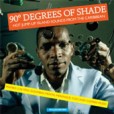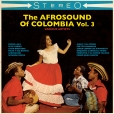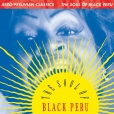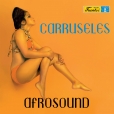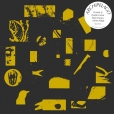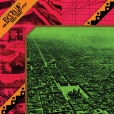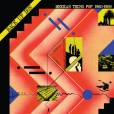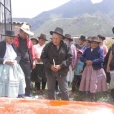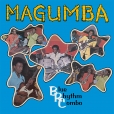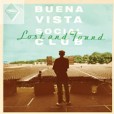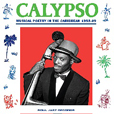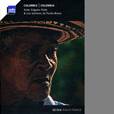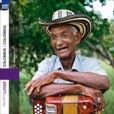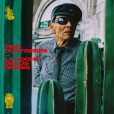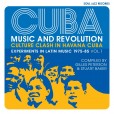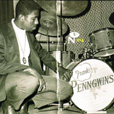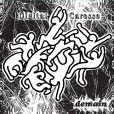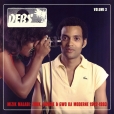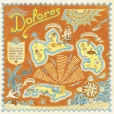Your basket is empty

A fresh, engaging compilation, spanning 1978-1988: a decentred, porous map of the Gallic musical scene during the Sono Mondial era, running routes from the suburbs of Paris to and from the French Caribbean Antilles and throughout the African diaspora; and revelling in the new general access to electronic instruments like synthesizers and drum machines.
‘From mutant drum machine beats to irresistible synthesizer hooks, fans of the fringes of the 80s will find songs to stir their cold, dark hearts. But Back Up Dos does more than mine retro kitsch: it documents the development of a rich DIY music scene that is still under-explored. As affordable samplers and digital synths spread throughout the decade, post-punk and new wave gave way to more aggressive EBM and cyberpunk sounds. The scene also developed in opposition to the political climate of the times: the rise of the drug cartels and a reactionary turn in national politics. Using home recording techniques, these bands took cues from the electronic wizardry of the Human League and Wax Trax Records while reflecting the vibrant and chaotic Mexican cultural landscape of the era. On Back Up Dos, impeccable pop anthems from Casino Shanghai and Los Agentes Secretos sit alongside gnarled obscurities from Ford Proco and María Bonita, showcasing a decade of sly deviance and enthusiastic experimentation. This album comes housed in an 80s-inflected neon sleeve designed by Gwenael Rattke and includes a 12-page booklet with photographs, lyrics, and notes. Back Up Dos compiles synthetic music produced in Mexico at the crossroads from Tecno Pop to Post-Industrial, nourished by culture shock and stories of dystopian worlds.’
A song-based ritual dedicated to the memory of Sofía Miranda de Bellido, performed one year after her death, in the Ayacucho region of the Central-South Sierra of Peru.
Bells are rung all morning. The coffin is presented at noon. Mass starts at midnight; at four the next morning, harp and violin players pick up the pace.
“I have not died, I will die on the day that you forget me!”
The out-of-this-world recordings of Dilson de Souza, leading a kind of tropical chamber jazz on leaves from a ficus tree.
Dilson was from Barra do Pirai, in the Brazilian countryside; moving to Rio as a young man, where he worked in construction. He recorded his first record in 1954, for RCA Victor. He travelled to Quito around 1957, soon hooking up with Benitez & Valencia, who introduced him to the CAIFE label.
Dilson played the leaf open, resting on his tongue, hands free, with his mouth as the resonator. Though a leaf can also be played rolled or folded in half, this method allowed for more precision, a tethered brilliance. A picked ficus leaf stays fresh, crisp and clean-toned for around ten hours. He could play eight compositions, four at each end, before it was spent.
Biluka plays trills and vibratos effortlessly, with utterly pure pitch, acrobatically sliding into notes and changing tone on the fly. In Manuco, he leads Los Caníbales into a mysterious landscape on a rope pulled from an Andean spaghetti western, and corrals and teases them into a dialogue. A leaf, a harp, a xylophone, and a rondador — joined in Bailando Me Despido (Dancing As I Say Goodbye) by a saucy organ, doing sloshed call-and-response. In Anacu de Mi Guambra, Biluka shows his full range of antics, hiccuping melodically over a set of magic tricks. His expressiveness was boundless.
The eucalyptus leaf is popular among Aboriginal Australians. In China, they’ve played leaves for 10,000 years. In Cambodia, people play the slek, a leaf plucked from either the sakrom or the khnoung tree. But ain’t nobody like Biluka, ever.
Astounding music.
‘Psychedelia, Afro-Roots & Champeta In 1980s Barranquilla.’
Gaitas music, for flutes and alegre, llamador and tambora drums.
Festive folk music from the country’s Caribbean region, with four basic forms — the son, paseo, merengue and puya — played with three traditional instruments: the caja vallenata drum, wooden guacharaca scraper, and three-line, German-style button accordion. Here are some of its most celebrated performers, including Francisco ‘Pacho’ Rada, Nicolas ‘Colacho’ Mendoza and Victor Camarillo.
Seventies Caribbean soul and funk — one ear tuned in to nearby Miami, with reggae and jazz in the mix too — from Frank Penn’s Freeport operation.
A dreamily odd, Antillean blend of synths, flute and drum machines, featuring a children’s choir. Originally a tiny 1986 pressing in Guadeloupe, revived by the Diggers Digest crew.
‘Diving deeper into the archives of one of the greatest French Caribbean labels, Disques Debs, based in Guadeloupe. Founded by the visionary Henri Debs in the late ‘50s, the label and studio operated for over 50 years, releasing more than 300 7” singles and 200 LPs, making it a cornerstone of Caribbean music history. The label bridged traditional genres like biguine and gwoka with contemporary styles like cadence, compas, and zouk. Volume 3 in this series spotlights one of the label’s most dynamic and influential periods as it expanded its global reach during the 1980s, highlighting both emerging talents and established artists who defined the era.’

